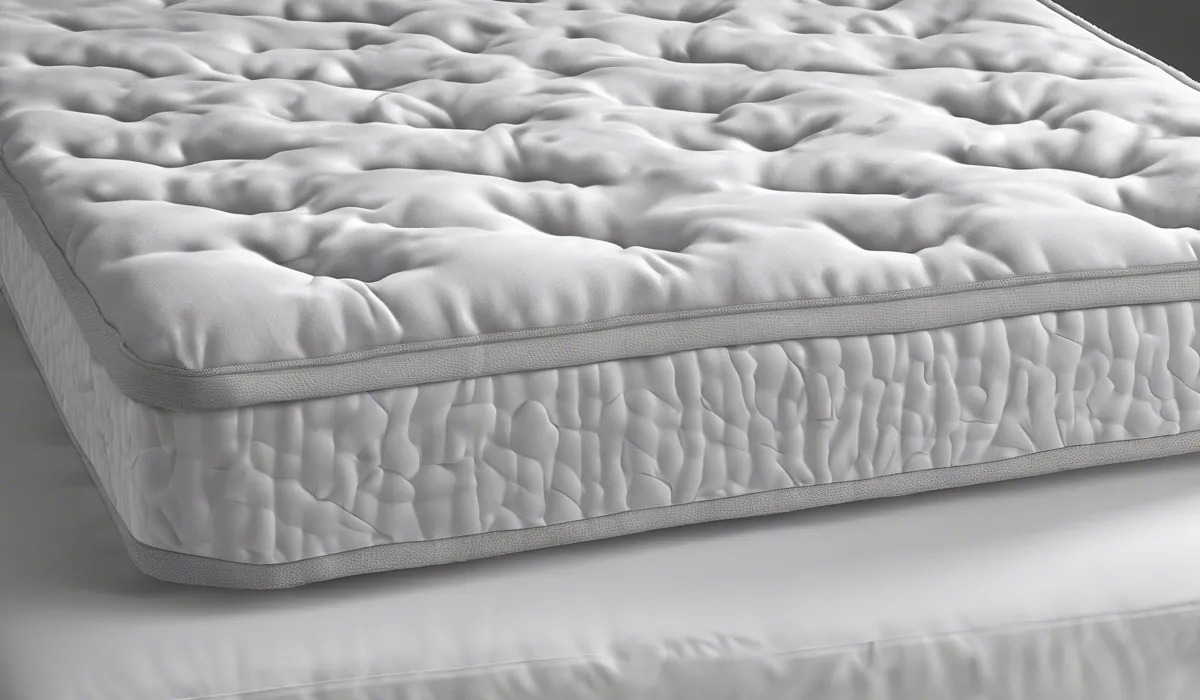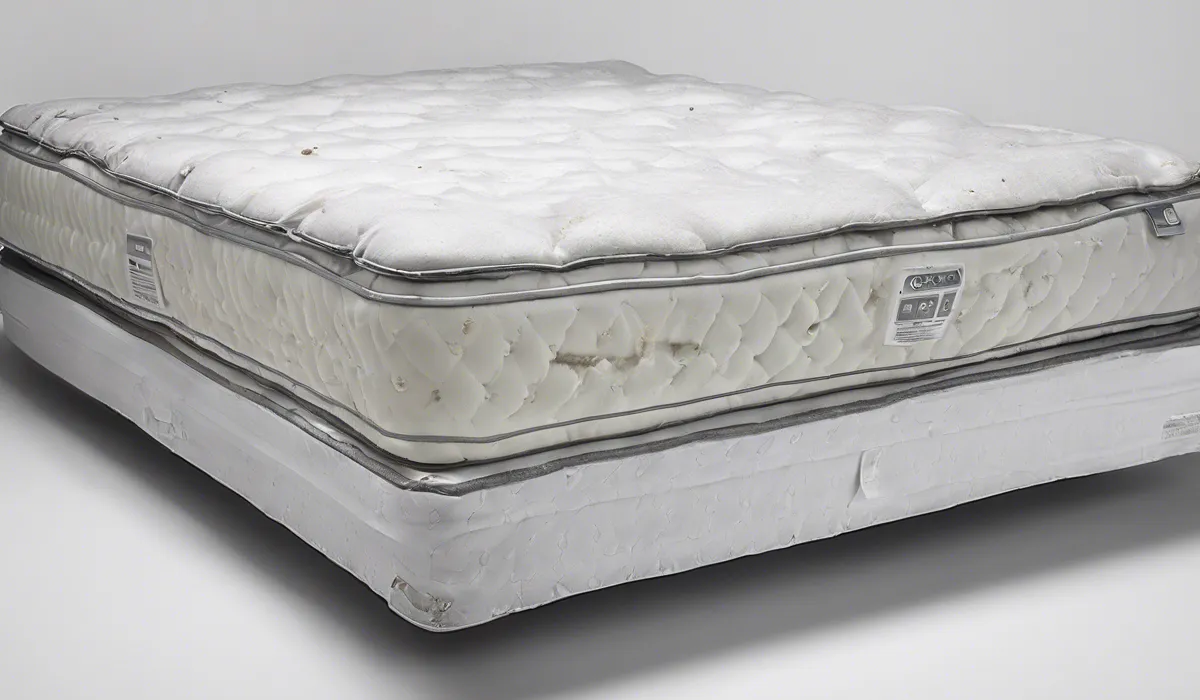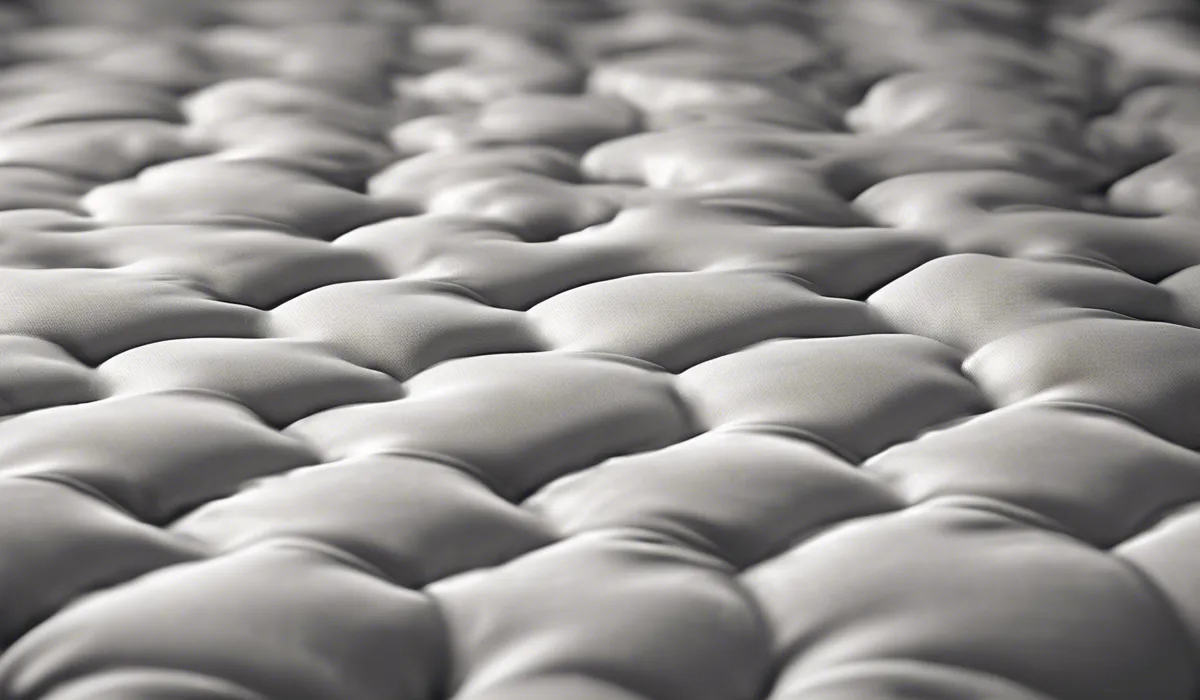Mold on a mattress is potentially dangerous as it can cause allergic reactions and respiratory problems. Prolonged exposure increases health risks, especially for individuals with mold sensitivities or compromised immune systems.
Understanding Mold on Mattresses

Definition of Mold
Mold is a type of fungus that consists of small organisms found almost everywhere. It plays a crucial role in nature by breaking down dead organic matter.
However, mold indoors, including on mattresses, can be a problem. Mold reproduces through tiny, lightweight spores that travel through the air. When these spores land on a damp spot indoors, they may begin to grow.
Common Types of Mold Found on Mattresses
Several types of mold can grow on mattresses, with some of the most common being Aspergillus, Penicillium, and Cladosporium.
These molds can appear as spots in various colors, including black, white, green, or yellow. Each type has its characteristics and potential effects on health.
How Mold Grows and the Conditions It Thrives In
Mold thrives in moist, warm environments with poor ventilation. A mattress can provide the perfect habitat when it absorbs sweat, body oils, and spills, or when it is situated in a humid room.
The absence of light and airflow beneath a mattress can also create ideal conditions for mold to flourish.
Identifying Mold on a Mattress: Visual Signs and Odors
To spot mold on your mattress, look for discolored patches or spots that may be green, black, or white.
Additionally, a musty or mildew-like smell is a strong indicator of mold presence. If you notice any of these signs or a persistent unexplained odor, it’s essential to investigate further for mold.
Health Risks Associated with Mold Exposure

Short-term Effects of Mold Exposure
Short-term exposure to mold can cause a variety of allergic reactions, including sneezing, itching, watery eyes, and skin rashes.
Respiratory issues such as coughing, wheezing, and difficulty breathing are also common. Additionally, mold can irritate the eyes, skin, nose, and throat, leading to discomfort and health problems.
Long-term Effects of Mold Exposure
Long-term exposure to mold can lead to more serious health conditions. Chronic respiratory conditions, such as asthma, can be aggravated or potentially caused by ongoing mold exposure.
Some studies suggest a link between mold exposure and neurological problems, although more research is needed. Mold is a potent allergen and irritant that can cause chronic symptoms over time.
Special Considerations for Vulnerable Individuals
Individuals who are particularly vulnerable to mold include infants and children, elderly people, those with compromised immune systems, and individuals with pre-existing respiratory conditions.
These groups should be especially cautious of mold exposure as their health might be affected more severely.
Prevention and Remediation

Strategies for Preventing Mold Growth on Mattresses
To prevent mold growth, ensure good ventilation and humidity control in your bedroom. Regular cleaning and maintenance of your mattress are also vital.
Using mattress protectors and covers can create a barrier that keeps moisture away from the mattress, reducing the risk of mold development.
Steps to Take If You Discover Mold on Your Mattress
When you find mold on your mattress, first assess the extent of the contamination. For small areas, you might use DIY methods like cleaning with a vinegar solution.
However, if the mold is widespread, professional remediation might be necessary. Ultimately, you may have to decide between thoroughly cleaning or replacing a moldy mattress.
Tips for Maintaining a Mold-Free Environment in the Bedroom
Regularly wash your bedding and linens to remove potential mold spores. Keep an eye on indoor humidity levels, aiming for 30-50% to discourage mold growth.
Also, inspect other furniture and areas in your bedroom for signs of mold to maintain a healthy, mold-free environment.
FAQs About Mold on Mattresses
Is mold on a mattress dangerous for everyone?
Mold on a mattress can be dangerous for everyone, but especially so for individuals with mold sensitivities, allergies, or compromised immune systems, who are at higher risk for adverse health effects.
What health problems can mold on a mattress cause?
Mold on a mattress can cause allergic reactions, respiratory problems, and in some cases, other health issues such as headaches or skin irritation.
How does prolonged exposure to mold on a mattress affect health?
Prolonged exposure to mold on a mattress increases the risk of developing chronic health issues, including respiratory conditions and ongoing allergic symptoms.
Can cleaning remove mold from a mattress?
Cleaning can sometimes remove surface mold from a mattress, but in many cases, professional remediation is necessary, and severely infested mattresses may need to be discarded.
Should I replace a mattress that has mold?
If a mattress is heavily infested with mold, it is typically recommended to replace it to prevent health risks and ensure a clean sleeping environment.
Final Thoughts
Mold presence on mattresses is a health hazard, with the potential to trigger allergic reactions and respiratory issues.
Risks escalate with extended contact, particularly affecting those with mold allergies or weakened immune systems. Prompt attention to mold is crucial for maintaining a safe sleeping environment.
